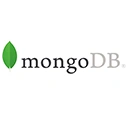Introduction to Multilingual Schema Design
Designing MongoDB schemas for multilingual applications requires careful consideration of language-specific data. In this guide, we'll explore advanced schema design techniques for multilingual applications, including language tags, localization, and sample code for managing multilingual data.
1. Language Tags and Locale
Language tags and locale information are essential for identifying the language of data stored in MongoDB. You can use ISO language codes or BCP 47 language tags to distinguish between languages. Here's an example of using language tags in MongoDB schema:
// Schema design with language tags in MongoDB
{
_id: ObjectId("document_id"),
content: {
en: "English content",
fr: "Contenu en français",
es: "Contenido en español"
}
}
2. Localization and Resource Bundles
Localization is key to providing content in multiple languages. You can use resource bundles to store language-specific data. Here's an example of a resource bundle in MongoDB:
// Storing language-specific data in resource bundles
{
_id: ObjectId("bundle_id"),
language: "en",
resources: {
greeting: "Hello",
farewell: "Goodbye",
// ... other localized content
}
}
3. Querying Multilingual Data
To retrieve data in a specific language, you can use query conditions that match the desired language tag. Here's an example of querying data in a particular language using MongoDB's `$elemMatch` operator:
// Querying data in a specific language
db.collection.find(
{ "content": { $elemMatch: { $eq: "Contenu en français" } } }
);
4. Conclusion
Advanced schema design for multilingual applications in MongoDB enables you to create versatile and user-friendly applications that cater to a global audience. By using language tags, localization, and query techniques, you can efficiently manage multilingual data and deliver a seamless experience to users in various languages.

